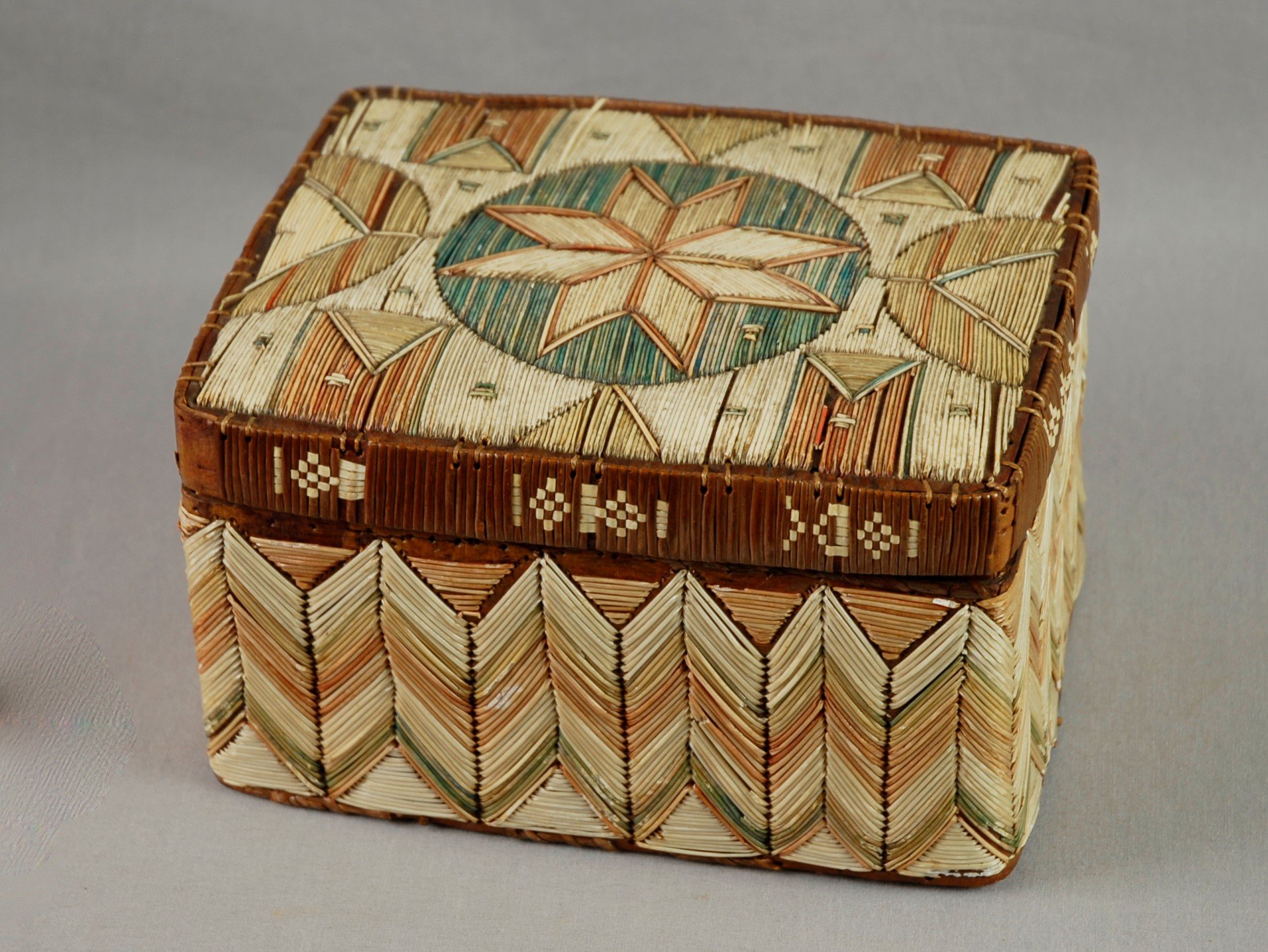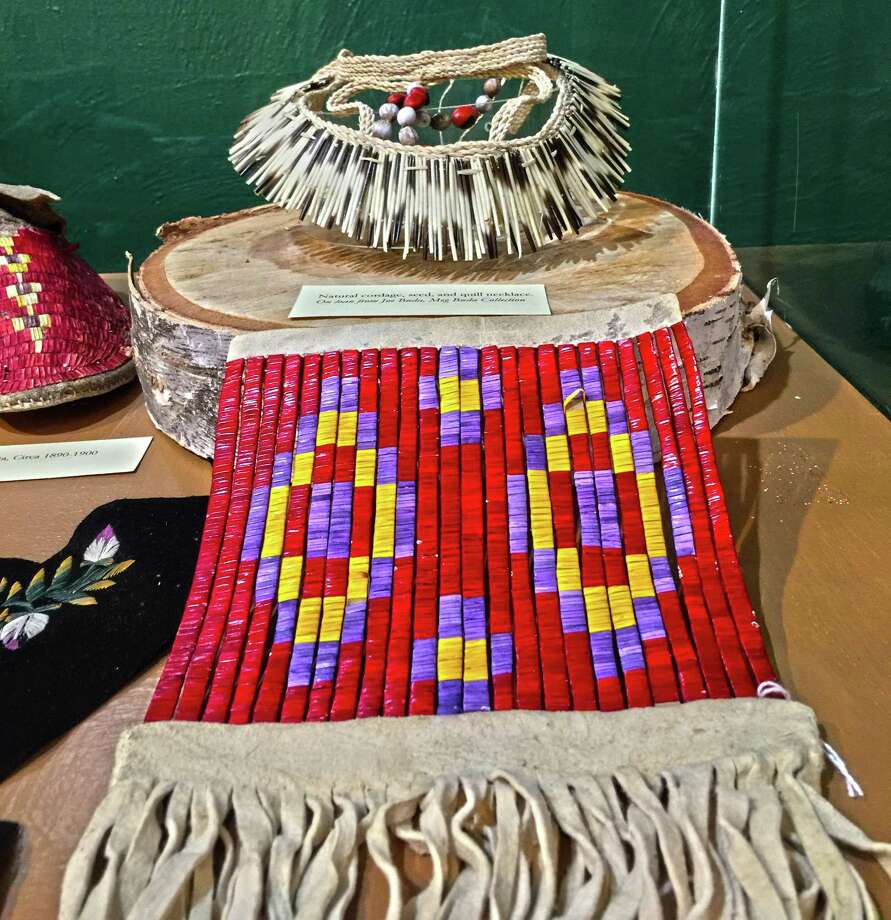
Quillwork Techniques Demonstration at a Museum: A Deep Dive into Indigenous Ingenuity
Quillwork, an ancient and intricate art form originating from Indigenous peoples across North America, stands as a profound testament to human ingenuity, artistic expression, and cultural resilience. Often utilizing the natural defensive armature of the porcupine—its quills—this highly specialized craft transforms sharp, hollow spines into breathtaking decorative patterns on various substrates. A museum demonstration of quillwork techniques offers a unique pedagogical window into this complex artistry, bridging historical practice with contemporary understanding and fostering a deeper appreciation for Indigenous cultural heritage. This article will meticulously explore the multifaceted aspects of such a demonstration, from the historical and cultural underpinnings to the detailed technical execution and its pivotal role in cultural transmission and preservation.
I. Historical and Cultural Genesis of Quillwork
The origins of quillwork predate European contact by millennia, making it one of the oldest decorative arts in North America. Archaeological evidence suggests its practice dates back at least 8,000 years, evolving from simple applications to highly sophisticated designs. Geographically, quillwork flourished among diverse Indigenous nations, particularly those inhabiting the woodlands, plains, and subarctic regions where porcupines were abundant. Nations such as the Lakota, Dakota, Anishinaabe (Ojibwe), Cree, Haudenosaunee (Iroquois), and Dene are renowned for their distinct styles and mastery of this art.
Historically, quillwork was more than mere ornamentation; it was imbued with profound spiritual, social, and economic significance. Items adorned with quills—ranging from clothing (moccasins, jackets, leggings), ceremonial objects (pipe bags, medicine bundles), and personal accessories (belts, pouches) to utilitarian items (birch bark containers)—often communicated status, identity, and spiritual beliefs. The creation of quillwork was traditionally the domain of women, who were revered for their skill, patience, and artistic vision. This art form served as a vital means of cultural expression, intergenerational knowledge transfer, and a significant trade commodity among Indigenous communities.

The materials themselves tell a story of profound connection to the land. Porcupine quills, harvested ethically and respectfully, formed the primary medium. Brain-tanned hides (deer, moose, elk), sinew (from animals like deer or moose) for stitching, and natural dyes derived from roots, berries, bark, and minerals constituted the core palette. The advent of European trade introduced new materials, such as glass beads, metal tools, and commercial dyes, which led to a fascinating period of artistic adaptation and innovation, though quillwork largely maintained its distinct aesthetic and cultural importance.
II. The Museum Demonstration as a Pedagogical Imperative
Museums, as custodians of cultural heritage, increasingly recognize the value of dynamic, experiential learning. A live quillwork demonstration transcends the static display of artifacts, offering an immersive educational experience that activates the senses and stimulates intellectual curiosity. It serves several critical functions:
- Cultural Interpretation: It provides a living context for artifacts, illustrating the processes behind their creation and the human stories embedded within them.
- Dispelling Misconceptions: It challenges stereotypical notions of "primitive" art by showcasing the immense skill, precision, and artistic sophistication inherent in quillwork.
- Fostering Empathy and Understanding: Direct interaction with an Indigenous artist and their craft cultivates a deeper appreciation for diverse cultural practices and worldviews.
- Preservation and Revitalization: By demonstrating the techniques, museums contribute to the ongoing efforts of Indigenous communities to preserve and revitalize this art form for future generations.
- Public Engagement: It transforms the museum visit into an interactive dialogue, inviting questions, observations, and personal connections.

The demonstrator, often a contemporary Indigenous artisan deeply rooted in their cultural traditions, acts as both a master craftsperson and a cultural ambassador. Their presence imbues the demonstration with authenticity, personal narrative, and the living spirit of the art.
III. Anatomy of a Quillwork Demonstration: Techniques Explained
A comprehensive quillwork demonstration systematically unveils the meticulous steps involved in transforming raw quills into intricate designs. This process can be broken down into several key stages, each requiring specialized knowledge and skill.
A. Quill Preparation: From Harvest to Palette
The initial stages are foundational to the entire process, emphasizing ethical sourcing and material transformation.
- Quill Harvesting: Demonstrators often begin by explaining the respectful and sustainable methods of quill collection. Porcupines are never harmed for their quills; instead, quills are gathered from fallen animals, through careful plucking (often by covering the porcupine with a blanket and then releasing it), or from roadkill. Safety in handling these sharp materials is paramount.
- Cleaning and Sorting: Upon collection, quills are typically cleaned to remove any oils, dirt, or debris. This might involve washing in warm water and then drying. They are then meticulously sorted by size and thickness, as different techniques require specific quill dimensions. This sorting ensures uniformity and precision in the finished piece.
- Dyeing: Historically, quills were dyed using an extensive palette of natural pigments. The demonstrator might showcase samples of plants used—berries (e.g., chokecherries for red, blueberries for blue), roots (e.g., bloodroot for orange-red), bark (e.g., alder for brown, oak for black), and mineral earths (e.g., ochre for yellow or red). The process involves boiling quills with the dye material, often with a mordant (a substance like wood ash or iron oxide) to help the color adhere and achieve desired shades. The result is a vibrant array of colors, from earthy tones to rich blues, reds, and yellows, each with cultural significance. With the arrival of European traders, commercial aniline dyes became available, expanding the color spectrum but often used alongside traditional natural dyes.
- Flattening: This crucial step involves transforming the naturally round, hollow quill into a pliable, flat ribbon. Historically, this was achieved by drawing the quill between the teeth, or using specialized bone or stone flatteners. Modern artisans may use metal tools. The act of flattening not only makes the quill easier to work with but also allows it to lie smoothly on the substrate, creating a consistent surface and catching the light more effectively.
B. Core Quillwork Techniques
Once prepared, quills are applied to a substrate using a variety of sophisticated techniques, each producing distinct visual textures and patterns. The demonstrator typically illustrates these methods using an awl (traditionally bone or antler, now often metal) for piercing holes, and sinew (or sometimes cotton thread for modern practice) for stitching.
- Wrapping: This is one of the most fundamental techniques. Quills are tightly wrapped around thin strips of rawhide, sinew, or leather. The wrapped element is then often stitched onto a larger surface, creating fringes, decorative bands, or covering three-dimensional forms like pipe stems. The effect is a continuous, textured surface.
- Folding and Stitching (Simple Fold/Spot Stitch): This technique involves folding a flattened quill over a line of sinew or directly onto the hide. The quill is then secured by piercing a small hole through the hide (or through the sinew and hide) with an awl and stitching it down with sinew. This creates individual "spots" or short lines of color.
- Running Stitch (or Strip Quillwork): In this method, flattened quills are laid parallel to each other on the surface of the hide. A separate sinew thread is then used to stitch down each quill at regular intervals, effectively "couching" the quills to the substrate. This creates continuous lines or bands of color and is often used for borders or geometric patterns.
- Zigzag Stitch (or Line of Quills): This technique produces a distinctive zigzag or chevron pattern. A flattened quill is folded back and forth over a sinew thread, creating a series of triangular folds. Each fold is then secured to the hide with a small stitch. This technique is highly versatile for creating continuous lines and intricate designs.
- Plaited (or False Braid) Quillwork: This advanced technique creates the illusion of a woven or braided surface. Flattened quills are folded and interlocked in such a way that they appear to be braided, without actually being woven. This often involves overlapping folds that are then secured from underneath, resulting in a dense, rich texture.
- Birch Bark Quillwork: Unique to the Woodlands region, this technique is used to decorate birch bark containers, boxes, and baskets. Holes are carefully pricked into the birch bark, and flattened, often dyed, quills are pushed through these holes. The ends of the quills are then bent over on the inside of the bark and secured, creating intricate geometric, floral, or animal designs on the exterior. This method often involves complex pattern registration and precision.
- Overlapping Stitch: Similar to the running stitch but with a slight overlap of quills, creating a denser, more robust surface that minimizes the visibility of the underlying substrate.
The demonstrator will typically have partially completed pieces to illustrate different stages and techniques, alongside finished artifacts to showcase the final aesthetic. They often share anecdotes about the origin of patterns, the significance of colors, and the cultural stories associated with specific designs.
IV. Engaging the Audience and Cultural Transmission
Beyond the technical exposition, a quillwork demonstration is a powerful act of cultural transmission. The artisan often engages the audience through:
- Q&A Sessions: Encouraging questions about the materials, techniques, cultural context, and the artist’s personal journey.
- Touch Samples: Allowing visitors to feel prepared quills, brain-tanned hide, and examples of different quillwork textures (under supervision) to enhance sensory engagement.
- Storytelling: Weaving personal narratives, historical accounts, and traditional teachings into the demonstration, thereby connecting the craft to a living cultural heritage.
- Language: Sometimes incorporating Indigenous language terms for materials or techniques, further enriching the cultural experience.
This interactive approach transforms passive observation into active learning, fostering a deeper, more personal connection to the art and the culture it represents. It also provides an opportunity for the demonstrator to address misconceptions, such as the idea that quillwork is a "lost art"—emphasizing its enduring vitality and the ongoing revitalization efforts within Indigenous communities.
V. Preservation and Modern Relevance
Museum demonstrations of quillwork techniques are vital components in the broader efforts of cultural preservation and revitalization. They highlight the challenges of conserving fragile quillwork artifacts, which are susceptible to environmental factors like light, humidity, and pests. More importantly, they underscore the role of contemporary Indigenous artists who are dedicated to mastering, innovating, and teaching these ancestral skills, ensuring their continuity.
By providing a platform for Indigenous voices and artistic expressions, museums contribute to the decolonization of their narratives and actively support the living traditions of Indigenous peoples. A quillwork demonstration is not merely a display of historical craft; it is a celebration of enduring creativity, a lesson in material science, a window into cultural worldview, and a powerful statement about the resilience and continuous evolution of Indigenous art and knowledge systems. It leaves visitors with an indelible impression of the profound beauty, intricate skill, and deep cultural meaning embedded within every meticulously placed porcupine quill.


